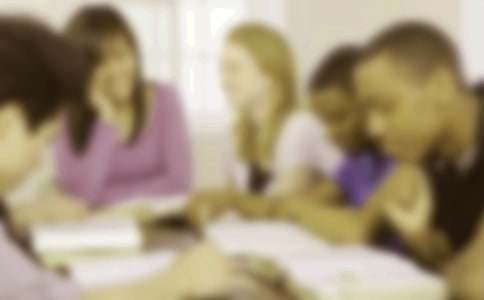托福聽力困境的原則
1.聽見什么,選什么原則

該原則為“TOEFL聽力段子十大黃金原則”之首,因為其它九大原則都建立在它的基礎之上。
(鑒于有的地方提高難度,該原則適當遵循.)
2.重復原則
聽段子時,要特別注意那些“重復率高的詞或概念”。因為重復率高的東西容易引起我們聽者的注意。畢竟托福的測試對象是我們這些把英語作為第二語言的人,所以ETS的考點也只能是那些對我們而言,通過努力能聽懂的地方。
Bonus:
段子中“重復率最高的詞或概念”很可能就是這個段子的主題(TOPIC)。
3.建議原則
聽段子時,要特別注意那些“含有建議含義的詞或結構”。因為無論段子還是對話,建議的地方永遠做考點。
Multiply:
歷年TOEFL聽力段子中最常考的建議類結構匯編:
1)You should
2)I suggest / I propose / I recommend
3)proposal / tips / suggestion / advice/ recommedation
4)had better do sth. / be better off doing sth.
5)How about…? / What about…?
6)Why not…? / Why don’t you…?
7)If I were you, I would…/ I wouldn’t…
8)Would it make things go faster if you…?
9)Maybe / Perhaps you…
10) How does … sound?
4. 強調原則
乍聽上去,強調原則顯得很籠統。其實具體可分為兩大類:語義強調和語氣、語調強調。
語義強調包括含義強調、解釋強調、舉例強調、級別強調、結論強調、對比強調等六種。
語氣、語調強調包括重音強調、停頓強調、清晰強調等三種。
下面我們就來一一論述,先講“語義強調的六大分支”。
1)含義強調:
聽 段子時,要特別注意那些“本身含義上就給我們以震撼或觸動的詞或結構”。比如:“Especially”一詞后面的內容一定是考點,因為它本身就表示“尤 其是”,體現了ETS的“求異思想”。再比如:“new theory”周圍也一定存在考點,因為這體現了ETS的“求新思想”。有時ETS為強調某事,還特意用一些極其顯而易見的表達方式提醒我們,例 如:“indeed(真正得)”、“certainly(當然)”、“Just remember(一定要記住)”、“And again.(再說一遍)”、“special feature(特殊的特征)”、“Most importantly(最為重要的是)”、“One thing I should mention(我應該提及的是……)”、“Make / Be sure to…(一定要……)”等等。更多的含義強調詞還靠大家自己積累和體會。
2)解釋強調:
聽段子時,要特別注意那些“本身含義上帶有 解釋性質的詞或結構”。比如:“…, which is / that is…(那就是說……)”顯然,“which is / that is…”引導的定語從句是ETS為防止我們考生聽不懂前面的內容(生僻的詞或概念),而特意添加上去,用來進一步加以解釋的。所以這種解釋性的定語從句理 所當然就成了強調考點所在的重要標志。類似的結構如“What I mean is…”、“All that means is…”等等不勝枚舉。
3)舉例強調:
聽 段子時,要特別注意那些“帶有舉例或列舉性質的詞或結構”。比如:“for example…(例如……)”因為例子總比道理簡單易懂得多。ETS清楚地知道:考生明白了后面的舉例,自然也就理解了前面的概念,然后再考前面的概念 也就順理成章了。這點顯然跟解釋原則類似。所以這種舉例或列舉式的結構也成了強調考點所在的重要標志。類似的結構如“for instance”、“such as…”“namely…”、“as an example”、“take example for ”等等不勝枚舉。
4)級別強調:
聽 段子時,要特別注意那些“帶有級別比較(比較級或最高級)性質的詞或結構”。比如:“much higher than…(比……高得多)”,因為有比較就有觀點,是觀點就是考點。所以這種帶有級別比較(比較級或最高級)性質的詞或結構也成了表明考點所在的重要標 志。類似的結構還有“-er”、“-est”“more”、“most”、“mostly”、“first”、“last”、“majority(多數 派)”、“minority(少數派)”、“above all(首要的是)”等等舉不勝舉。
5)結論強調:
聽段子時,要特別注意 那些“帶有結論、總結性質的詞或結構”。比如:“I concluded that…(我的結論是……)”,不可否認,結論性言語在哪里都是最重要的,所以這種帶有結論、總結性質的詞或結構也標志著考點的存在。類似的結構還有 “conclusion”、“summarize”、“make a summary(總結)”、“in brief(概括說)”、“in short(簡而言之)”、“in a word(簡而言之)”、“in a conclusion”、“finally”、“all in all”、“to sum up”等等舉不勝舉。
6)對比強調:
聽段子時,還要特別注意那些“帶有對比性質的`詞或結構”。比 如:“compare to…(與……相比)”這種帶有對比性質的詞或結構也標志著考點就在周圍。類似的結構還有“unlike(不象)”、“similar to(與……類似)”、“in contrast to(與……對照)”、“differently”、“alike(象)”、“resemble(類似)”“on the other hand”“instead”“likewise”“in the same way”等等。
接下來講語氣、語調強調的三大分支。
1)重音強調:
聽段子時,我們作為聽者,都會下意識地注意聽那些“讀音很重的詞或結構”。因為它們got our attention(抓住了我們的注意力)。這就是ETS本能強調的突出體現。所以重音所在必為考點所在。
2)停頓強調:
一個段子讀得好好的,突然一個停頓,過了一兩秒種后才恢復過來。這種嘎然而止的現象特別能引起我們考生的注意。同樣也達到了ETS get attention的目的,成為本能強調的又一突出體現。所以停頓所在必為考點所在。
3)清晰強調:
該 強調方式最具隱蔽性。因為大多數考生有一種奇怪的想法:認為容易聽清聽懂的地方不會考,最會考的是那些生僻難懂之處。所以不惜花大量時間和精力去分析、猜 測難點含義,卻忽略以致放棄已經聽懂的地方。不要忘記TOEFL是第二語言測試,不會“沒有人性”到“專考生僻所在”。所以應引起我們充分重視的還是那些 讀得清晰的易懂之處。切記:清晰之處一樣是考點所在。
5.因果原則
聽段子時,要特別注意那些“含有因果含義的詞或結構”。因為無論段子還是對話,有因果的地方永遠做考點。因果類標志詞又可細分為原因類和結果類。
Multiply:
歷年TOEFL聽力段子中最常考的因果類結構匯編:
原因類:
1)because …
2)because of …
3)due to …
4)since …
5)as …
6)for …
7)The reason is …
8)That’s why …
9)By reason of …
10) Owing to …
結果類:
1)so …
2)so that …
3)therefore …
4)thereby …
5)hereby …
6)thus …
7)As a result
8)consequently …
9)hence …
10)accordingly …
6.轉折原則
聽段子時,還要特別注意那些“含有轉折含義的詞或結構”。因為無論段子還是對話,轉折的地方永遠做考點。
Multiply:
歷年TOEFL聽力段子中最常考的轉折類結構匯編:
1)but …
2)however …
3)nevertheless …
4)while …
5)yet …
6)unless …
7)except for …
8)actually …
9)in fact …
10) To tell you the truth …
11)practically …
12)virtually …
13)as a matter of fact …
7.問答原則
聽段子時,還要特別注意那些“含有一問一答或自問自答形式的句子或結構”。往往問題就會做為考題,而對問題的回答就是考點所在,即正確答案的出處。
8.開頭原則
聽段子時,要特別注意聽清“段子開頭的一兩句話”。往往TOPIC(主題)會在這一帶出現,而主題必為考點。
9.尾巴原則
同樣,還要特別注意聽清“段子結束時的一兩句話”。往往CONCLUSION(結論)會在這一帶出現,而結論也必為考點。
10.人名原則
切記:聽段子時,不論是文科段還是理科段,只要出現人名的地方,往往“埋伏著”考點。因為后面必有一道題會問這個人的地位、作用和所做出的特殊貢獻。故含有人名之處必為考點。
以上十大原則匆匆講完,想必有點“紙上談兵”的感覺。下面我們就試著運用一下。先給大家一個段子,請在60秒內,通過迅速掃描,把可能會出題的地方在原文中劃出來。開始!
[2000.1.(47)——(50)]
Questions 47-50. Listen to the beginning of a lecture given by a history professor.
Good morning, class. Before we begin today, I would like to address an issue that one of you reminded me of after the last lecture. As you may recall, last time I mentioned that Robert E. Pierre was the first person to reach the North Pole. What I neglected to mention was the controversy around Pierre’s pioneering accomplishment. In 1910, a committee of the national geographical society examined Comeydore Pierre’s claim to have reached the North Pole on April 6th 1909 and found no reason to doubt him. This judgment was actually confirmed by a committee of the US congress in 1911. Nevertheless, Pierre’s claim was surrounded by controversy. This was largely due to the competing claim of Doctor Frederic Cook who told the world he had reached the Pole a four-year earlier. Over the decades Pierre was given the benefit of the doubt, but critics persisted in raising questions about his navigation and the distances he claimed to have covered. So the Navigation Foundation spent an additional 12 months of exhaustive examination of documents relating to Pierre’s polar expedition. The documents supported Pierre’s claims about the distances he covered. After also conducting an extensive computer analysis of photos taken by Pierre at the pole, they concluded that Pierre and his companions did in fact reach the near vicinity of the North Pole on April 6th, 1909. OK, today we’re going to talk about exploration of the opposite end of the world. I assume you all read chapter 3 in our text and are now familiar with the names: Emerson and Scott.
OK,下面我把考點用粗體陰影標出。看看你劃得對嗎?
Good morning, class. Before we begin today, I would like to address an issue that one of you reminded me of after the last lecture.(開頭原則) As you may recall, last time I mentioned that Robert E. Pierre was the first person (級別強調原則)to reach the North Pole. What I neglected to mention(含義強調原則) was the controversy around Pierre’s pioneering accomplishment. In 1910, a committee of the national geographical society examined Comeydore Pierre’s claim to have reached the North Pole on April 6th 1909 and found no reason to doubt him. This judgment was actually confirmed by a committee of the US congress in 1911. Nevertheless, (轉折原則)Pierre’s claim was surrounded by controversy. This was largely due to (因果原則)the competing claim of Doctor Frederic Cook who told the world he had reached the Pole a four-year earlier. Over the decades Pierre was given the benefit of the doubt, but (轉折原則)critics persisted in raising questions about his navigation and the distances he claimed to have covered. So (因果原則)the Navigation Foundation spent an additional 12 months of exhaustive examination of documents relating to Pierre’s polar expedition. The documents supported Pierre’s claims about the distances he covered. After also conducting an extensive computer analysis of photos taken by Pierre at the pole, they concluded that (結論強調原則)Pierre and his companions did in fact(轉折原則) reach the near vicinity of the North Pole on April 6th, 1909. OK, today we’re going to talk about exploration of the opposite end of the world. I assume you all read chapter 3 in our text and are now familiar with the names: Emerson and Scott. (尾巴原則)
中文參考譯文:
早上好。在我們開始之前,我想提一下上節課后一位同學給我提出的一個問題。 (開頭原則)你們可能還記得,上節課我說過Robert E. Pierre是第一個(級別強調原則)到達北極的人。而我沒提到過(含義強調原則)對Pierre這次歷險成就的爭論。1910年,一個國家地理學會小組 考察了“宣布Comeydore Pierre在1909年4月6日登上北極點”的報告,發現沒有理由懷疑他的成功。這個決定被美國國會在1911年就核實了。然而,(轉折原 則)Pierre的成就卻被疑問包圍著。這是因為(因果原則)Frederic Cook醫生宣布他比Pierre早4年到達北極點。在以后的年代里Pierre賺了懷疑的便宜,但是(轉折原則)批評家堅持對他所走方向和所走距離提出 疑問。所以,(因果原則)領航基金會又用了12個月的難熬時間來考察Pierre的歷險。文件支持了Pierre對路程的主張。在用了大量電腦分析 Pierre在北極點拍的照片以后,他們作出結論:(結論強調原則)Pierre和他的伙伴們實際上的確(轉折原則)在1909年4月6日到達了北極點。 好,今天我們將要討論對地球另一個極點的探索。我猜你們在讀過書中的第三章以后,一定對Emerson和Scott這兩個名字不陌生了吧?(尾巴原則)
【托福聽力困境的原則】相關文章:
托福聽力備考的原則11-22
托福聽力出題原則和解題思路11-21
關于托福聽力的七大原則11-23
托福聽力出題套路與解題原則有哪些11-22
2017托福聽力解題的五大原則08-20
新托福聽力測試中七大原則11-21
托福聽力技巧08-23
托福聽力指南08-17
托福口語復述的原則06-16